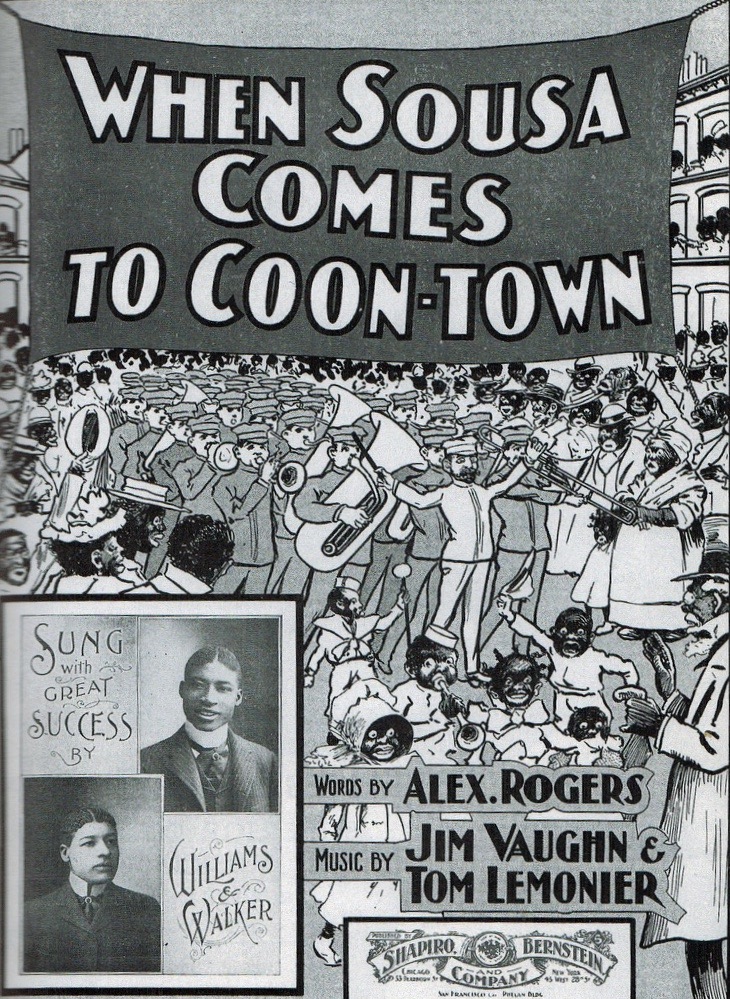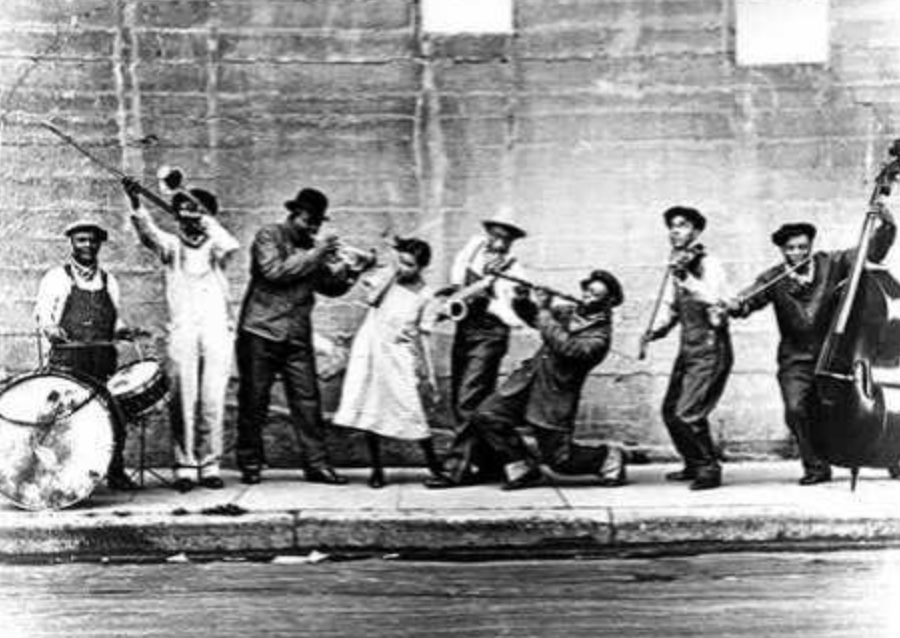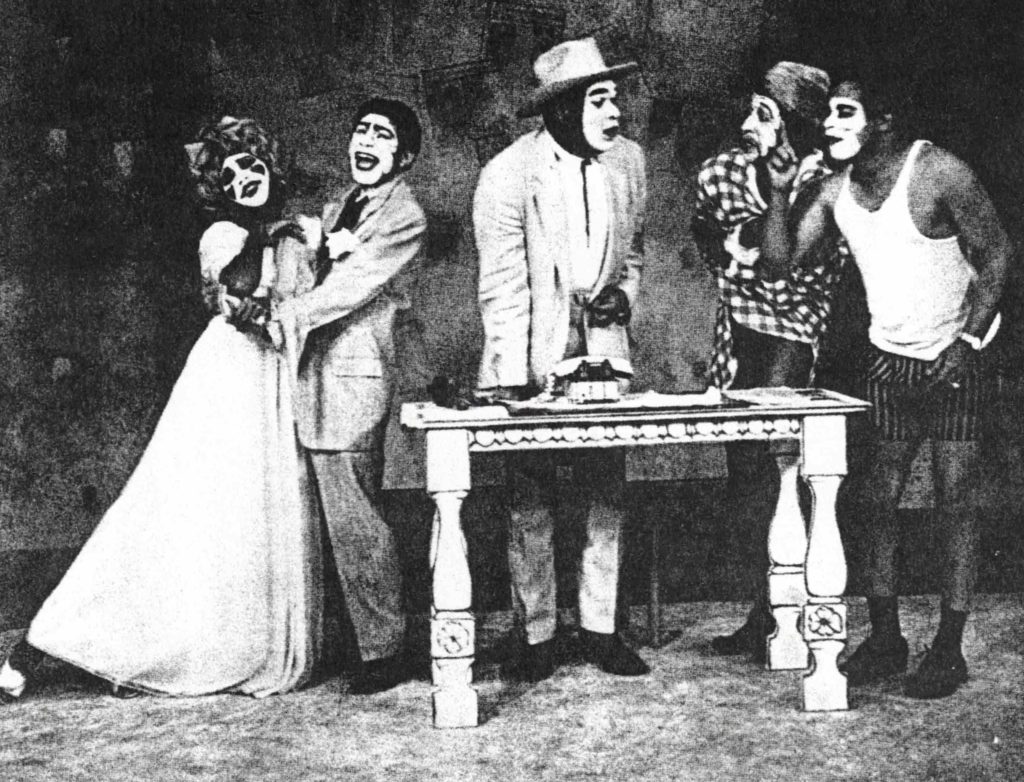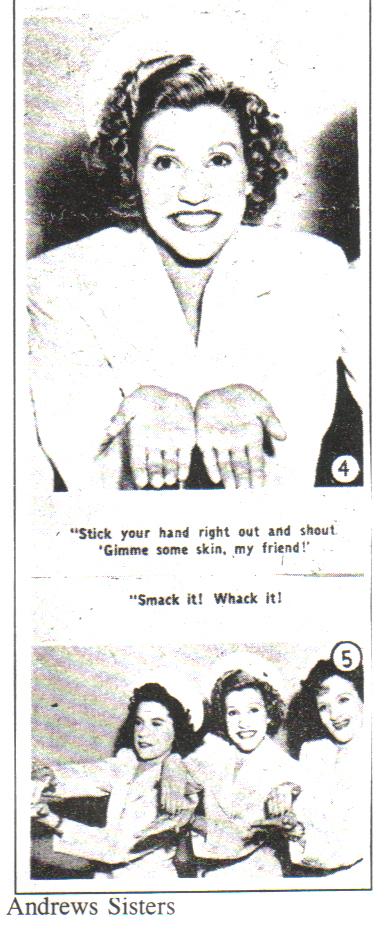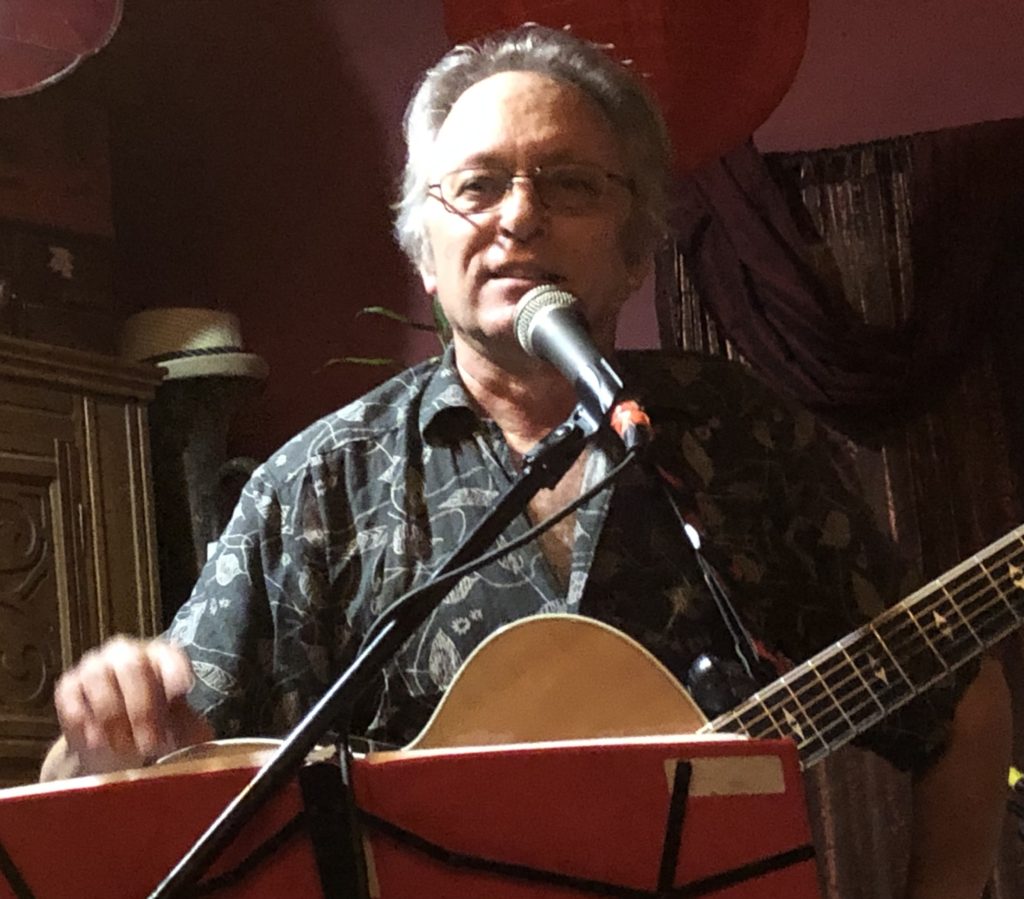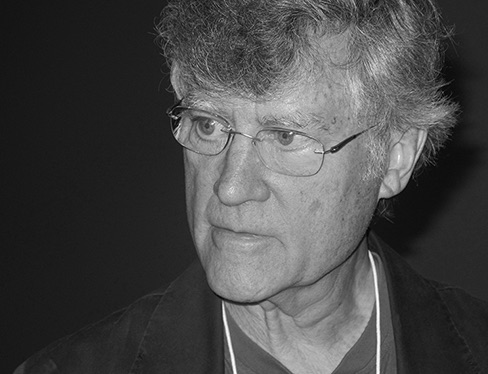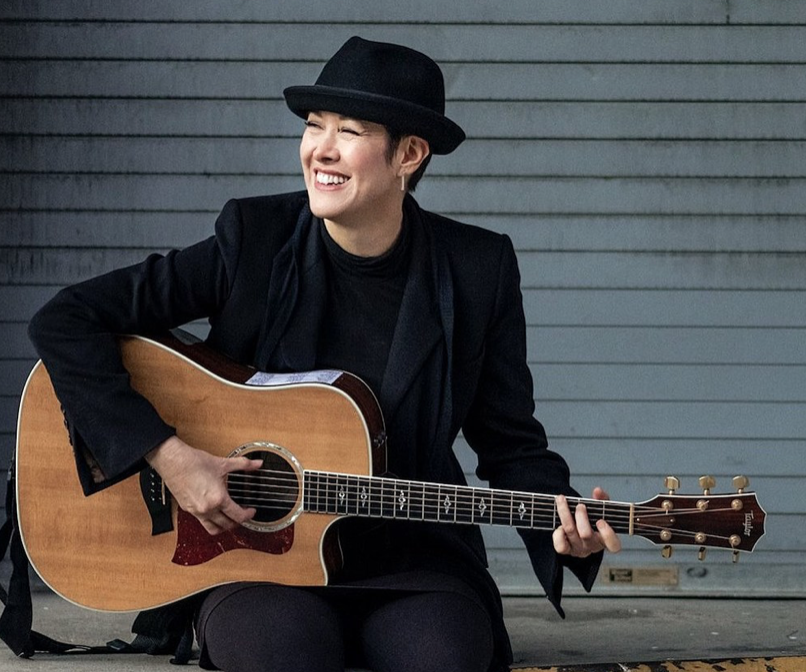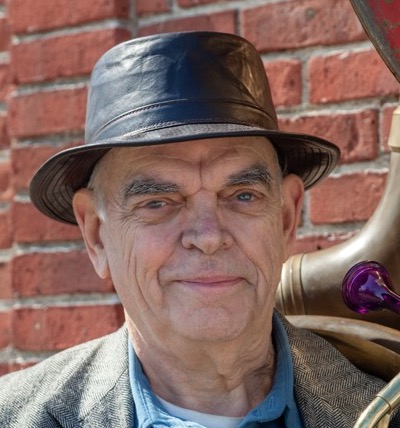The ring shout is at once the founding religious rite and the fount of music-dance of the Africans in the Americas. It is a counterclockwise dance, communicating to gods and ancestors. It is a piece of Africa transported by Africans to their quarters of enslavement across the Atlantic. Thomas Wentworth Higginson observed it in a civil war army camp:
That strange festival, half pow-wow, half prayer-meeting, which they know only as “shout”…singing at the top of their voices…accompanied with a regular drumming of the feet and slapping of the hands, like castanets.[i]
He called it “Half bacchanalian, half devout.” Indeed. Bacchus was, after all, a god. In some countries dance is a critical part of worship; in fact, in some places dance is mainly a form of worship.[ii]
__________________________________
THE BUNNY HOP
This dance is a variation on the conga line, brought from Cuba courtesy of US colonialism. It was (re)created in Balboa High School, San Francisco, in 1952. Even in the dreaded suburban fifties–especially in the fifties—it was necessary to create a thinly disguised African dance that White kids could entertain themselves with. I did it, and grew up a shade of Black without knowing it.
__________________________________
Marshall Stearns witnessed a shout remnant in South Carolina in the 1950s:
The dancers form a circle in the center of the floor, one in back of another. Then they begin to shuffle in a counter-clockwise direction around and around, arms out and shoulders hunched. A fantastic rhythm is built up by the rest of the group standing back to the walls, who clap their hands and stomp on the floor….Suddenly sisters and brothers scream and spin, possessed by religious hysteria….[iii]
The clapping and stomping, of course, developed as replacement for the outlawed drum.
Later the shout is brought into more or less “proper” churches, where worshippers sit in rows of benches or chairs. When they leap up, they go into the aisles. This leaping about under the influence of spirits becomes the new form of the shout: the ring is confined to the aisle, and the choir grows in importance.
We see the grandchild of the original in the Black church, especially the Holiness churches. And this is what the shout is about: possession of congregants by spirits.
Sterling Stuckey, commenting on Higginson, expanded on the (mis)underestimation that would become a permanent feature of American life:
Since he did not grasp the substance of their religious belief…As principled and faithful a friend of Blacks as he could comment, ‘They seem the world’s perpetual children, docile, gay, and lovable…’ Little did he realize that their tales of greatest depth—he had heard only those in a humorous vein—contained attacks on oppression sharper than anything managed by the keenest and most sympathetic intellectuals in the North.[iv]
So it wasn’t only religion that hid under the mantle of amusement or was misperceived as such: the overall social cohesion of the African community was the function of these rituals. Cohesion was also fostered through such activities as the Parade of Governors in New England. Commencing around 1750 and continuing for 100 years, the revelry cloaked religion, as did the shout, but also cloaked actual governance. Whites promoted these activities as a means of control, but in the bargain they facilitated cultural transmission as well as the recognition of leaders who ended up with more influence than the facilitators had bargained for. They dismissed African languages as gibberish and African spirituality as entertainment; the wisdom of hiding actual beliefs and practices from the boss was learned early and well by the Africans.
When African royalty are mistaken for jesters, nothing is what it seems. In short, what was noticed of African culture by Whites was a small part of what was going on, right under their noses. And the denial continues: take the case of Pinkster, a Dutch celebration (from the Dutch word for Pentecost). It went from a religious holiday to a celebration of spring, but over time came to be considered an African American holiday, widely celebrated in New York and New Jersey, peaking around 1790-1810:
Nine tenths of the Blacks in the city, and of the whole country within thirty or forty miles, indeed were collected in thousands in those fields, beating banjos, singing African songs…[there was] a marked difference between this festival and one of European origin.[v]
And yet, when I encountered a remembrance of it in Teaneck, New Jersey in the early 2000s, the local government sponsors made no mention of the African American aspect, and took no interest in a critique of it. The erasure of a supposedly free and equal people from history in many instances small and large constitutes a continuing insult and disempowering distortion of history.
Meanwhile, back in the 19th century: White ministers charged with Christianizing the heathens certainly noticed the shout, and crusaded against it. So over time it gets outlawed here and there, but persists: it continues in Philadelphia into the 1870s, long after slavery was permitted there; in Tennessee into the 1880s. It is observed by John and Alan Lomax in mid-20th century Texas, Louisiana, Georgia, the Bahamas; they see a similar ceremony in Haiti. And why should it not persist? As Stuckey points out, attempts to suppress the shout amounted to “asking them give up the products of ancestral genius as well as the means by which spiritual autonomy was preserved.”[vi] In fact, a minister—himself African American—attempting to quash the singing of spirituals in a Baltimore church in 1850 found himself confronted by “a congregation led by two women who, rising from a front row and approaching the pulpit with clubs, attacked him and an assistant pastor.”[vii]
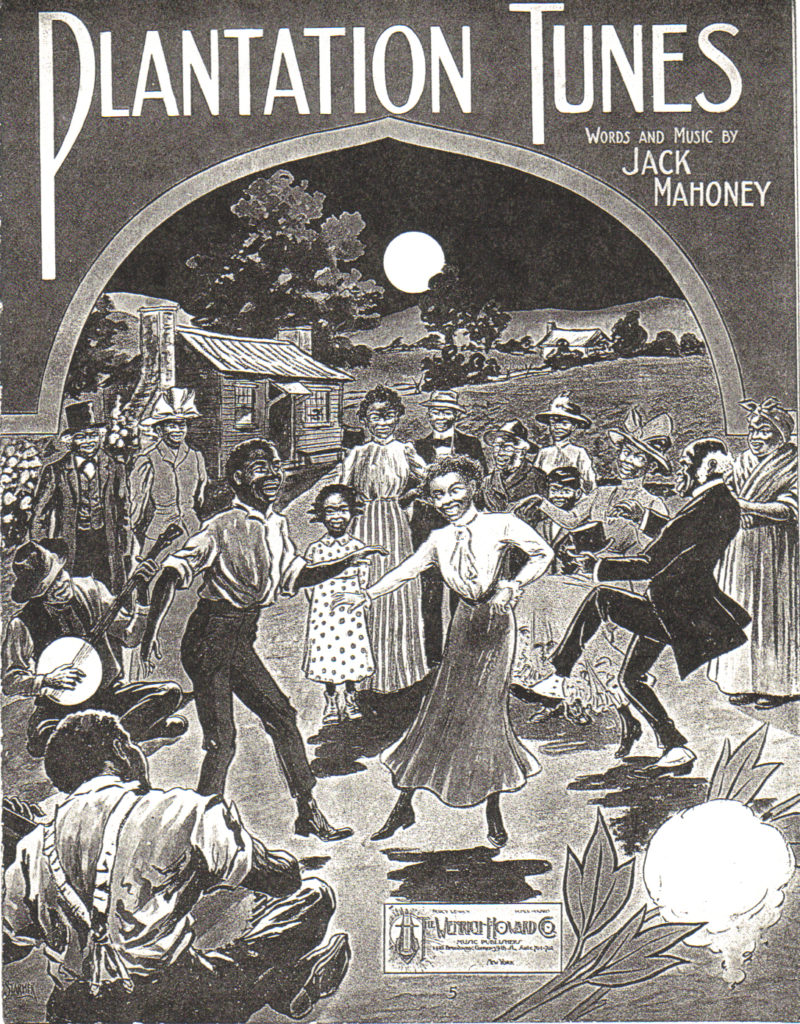
Most enslaved people brought to the Americas came from Dahomey (Benin), Nigeria, Togo, Ghana, Congo, Angola, Cameroon, Equatorial Guinea, Gabon—essentially the arc of territory all along the center of West Africa. So when we talk of the roots of culture among the enslaved, we are looking for its antecedents and essentials in this part of West Africa.[1] We must also bear in mind the presence of Muslim Africans, mostly from Senegal and Gambia, in the west central arc.[2] The rice farmers of the Carolinas and Georgia in particular were brought from Senegambia, where they had plied that trade. And linguistic influence from Mali, slightly inland from there, has been found in the Gullah language spoken in the Carolina-Georgia Sea Islands.
[1] There is also evidence of significant trafficking
of enslaved central Africans. See Holloway, 18-38.
[2] The Arabic word saut (pron. shout) means to walk or run around the Kaaba
(the holy building in Mecca). Remember,
there were lots of Muslims from Africa
enslaved in the Americas.
We draw conclusions, however, at our peril.
So these are the people who create the culture that fans out into and threads through the centuries of American culture. European-derived folks have often considered Africans, or Blacks, or “primitives,” simplistically, as being somehow mere physical beings, exotically sensual, not cerebral. But the banning of dance from religion that is so common among Euro-Americans might help us to understand that the Euro-Afro divide is not a mind-body divide, but rather a divide over whether the body can participate in the activities of the soul; that is, the two cultures differed over what spirituality encompasses. The western segregation of sacred and profane, casting out earthly concerns from religiosity, would catch up with the Black church, separating the blues from spirituals and Saturday night from Sunday morning. But African spirituality, in its origins and its practices for many generations in America, included what we would think of as secular under the umbrella of the sacred. Even when Africans in America adopted Christianity, they brought to it other ways of being, most obviously the physicality of their worship, which continues to express itself in movement and song, and shout.
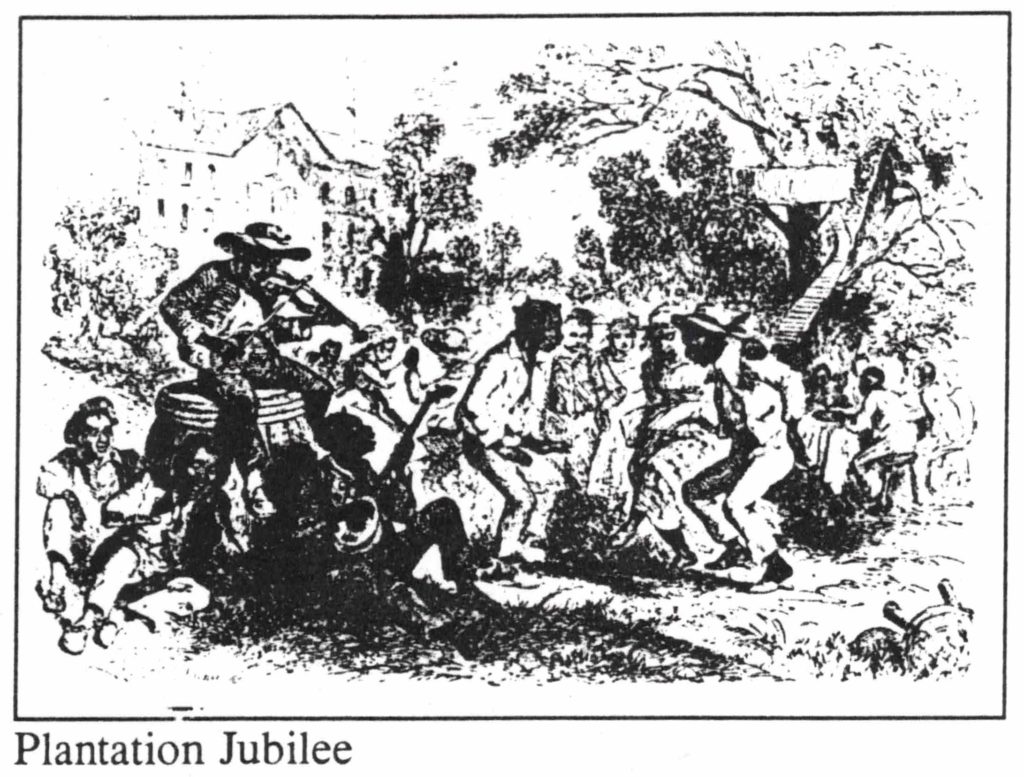
So finally, what is the effect of all this? Broadly, we can contemplate a continued struggle between worldviews and spiritual approaches; focusing directly on music, we can consider the perpetuation of Africanisms in the various subsequent forms of African American—and thus American—music, as did Marshall Stearns:
The continued existence of the ring-shout is of critical importance to jazz, because it means that an assortment of West African musical characteristics are preserved, more or less intact, in the United States—from rhythms and blue tonality, through the falsetto break and the call-and-response pattern, to the songs of allusion and even the motions of African dance.[viii]
In other words, African American culture came in on a ring and a shout, survived, and conquered.
Under the regime of slavery there was a major autumnal gathering on many plantations that served at least three purposes. The master needed the harvested corn husked. He had the sense to take advantage not only of the people under his own shackles but also of others from the neighborhood. So the shucking became not just another task; it was a party that featured husking speed contests, feasting, and song and dance. The enslaved were able to communicate among themselves, and the masters were able to enjoy African-American music. What sort of music was it? It was a remarkable enough display that
white observers discussed it a great deal, seeing in it something savage and therefore frightening, but enormously attractive at the same time.[ix]
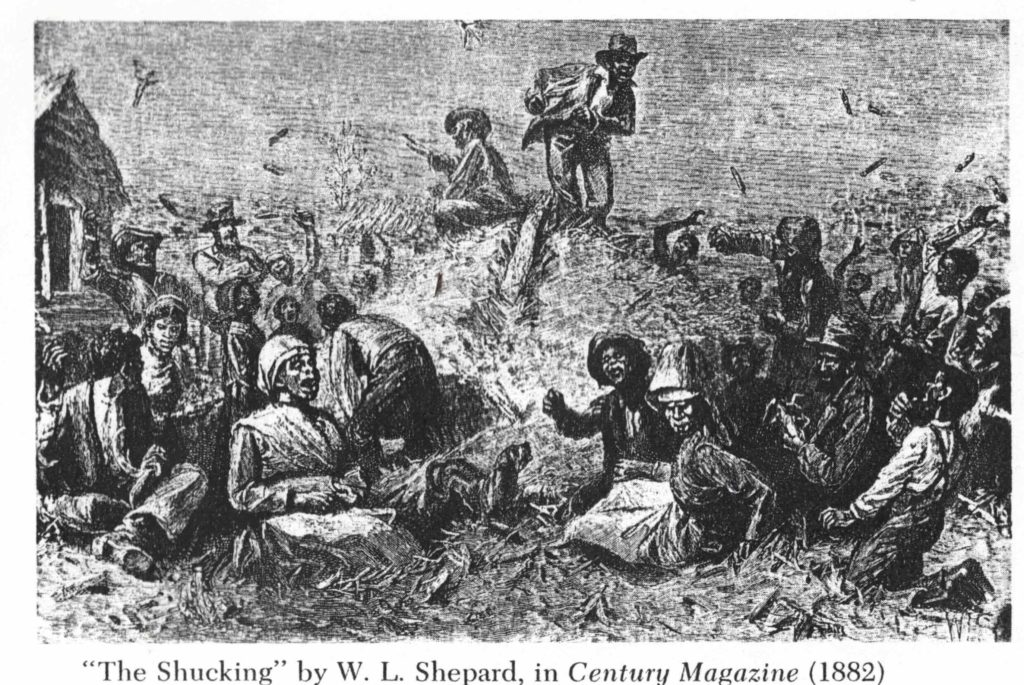
—a description remarkably similar to White society’s later response to jazz and blues and subsequent genres. What they heard was a blend of order with cacophony, singing that entered and disappeared, competition in volume and improvisation, calling and responding, led by the “captain,” who
seated himself on top of the pile—a large lightwood torch burning in front of him, and while he shucked, improvised words and music to a wild “recitative,” the chorus of which was caught up by the army of shuckers around.[x]
Captive workers played fiddles and banjoes, triangles and fifes. They also clapped, snapped, and patted on their bodies—a practice that came to be known as “patting juba,” and was one of many that substituted for the banned African drum.[3] A slave-owner wrote in 1851 that a fiddler he “owned” was “always accompanied with Ihurod on the triangle and Sam to ‘pat.”[xi] And in a remarkable pun,
the phrase “patter de pat, patter de pat” was used to warn fellow slaves of the presence of patrols in the neighborhood.[xii]
[3] The British prohibited the Africans from drumming in Jamaica in 1680,
in South Carolina after the Stono Rebellion of 1739,
and generally in the American colonies from the 1740s.
See Epstein, 1977, 59.
These patrols, or “paterollers” as the enslaved called them, were hunting escaped humans. But the shortening of the word to “pat” seems to have linked the practice of body percussion with a warning of danger, curiously similar to the communication of the famed banned drum. It could well have become one of many hidden meanings, its roots buried in the music.
And the clapping was no simple matter of getting it on the right beat; there were distinctly different pitches produced by different hand positionings and cuppings. The drum, again. Elaborate slap and clap became hambone, a cousin to juba used in playground games.
Perhaps the oddest percussion of all is also the most revealing of African rhythmic sense: the “beating of straws” on a fiddle. The setting of a second rhythm against the primary one, the meter or “beat,” produces syncopation. At the corn frolics, the fiddler had a second person armed with two stout lengths of straw, which are drummed against the fiddle strings between the bow and the fingering hand. One fiddle, two rhythms. W.C. Handy described another version:
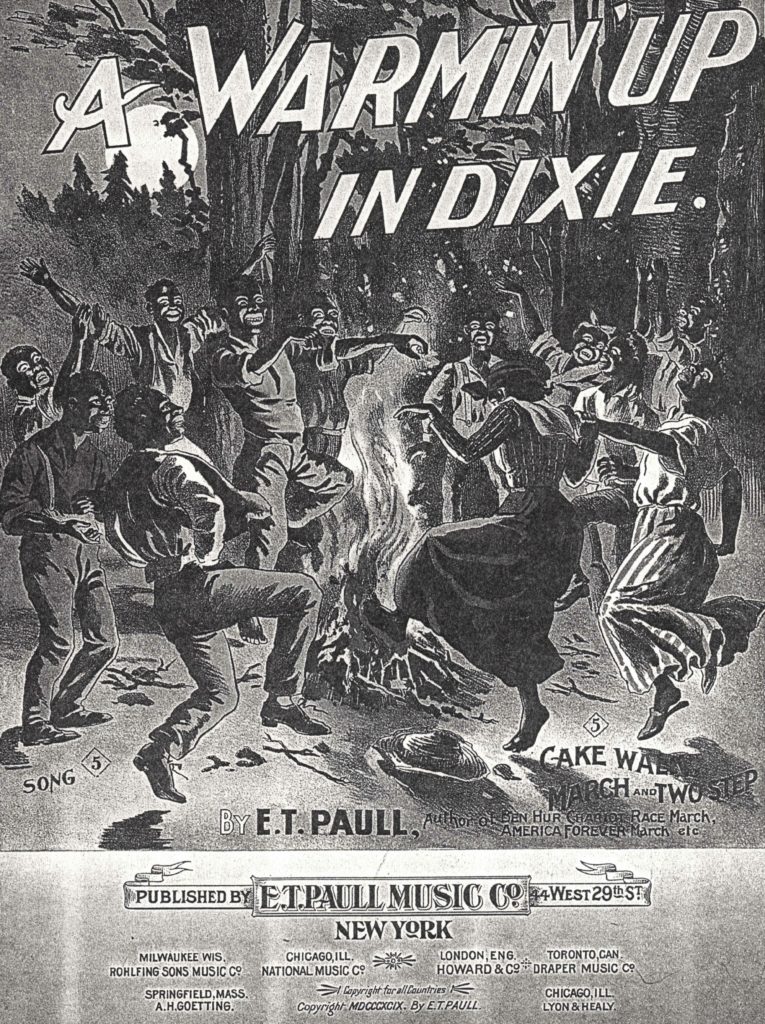
A boy would stand behind the fiddler with a pair of knitting needles in his hands. From this position the youngster would reach around the father’s left shoulder and beat on the strings in the manner of a snare drummer.[xiii]
What a curious thing to do. But then, the fiddle probably had more uses than we know—certainly more than the White observers of the day knew. It appears to have been one of several repositories for the power of the banned drum. It continued, arguably, the functions of summoning gods and spirits, transmitting their messages, and returning them whence they came.[xiv] If this seems like a big portfolio for a little fiddle, consider the stringed instruments of India and the respect they command in spiritual music; then reconsider the drum, and music and dance in general, in the West African cultures that gave pride of place to music and dance in their communal spiritual activities. (We could probably find something similar in Europe if we looked back a ways to pre-monotheistic cultures.) These enslaved Africans had African fiddles in their background before encountering the European one. And their truly old-time fiddling in the old country had, as noted above, not been irreligious, not mere entertainment.
American missionaries at times tried to stamp out fiddling among the enslaved. What they thought profane, Africans thought sacred. Yet a single plantation in Georgia, holding 500 enslaved persons in the 1840s, had 25 fiddlers among them. And how many dance callers? Phil Jamison, a professor of Appalachian Studies and Music, professes:
All the earliest references to dance callers were black musicians. And that’s something that you do not find in the European tradition, but developed in this country with these black fiddlers.[xv]
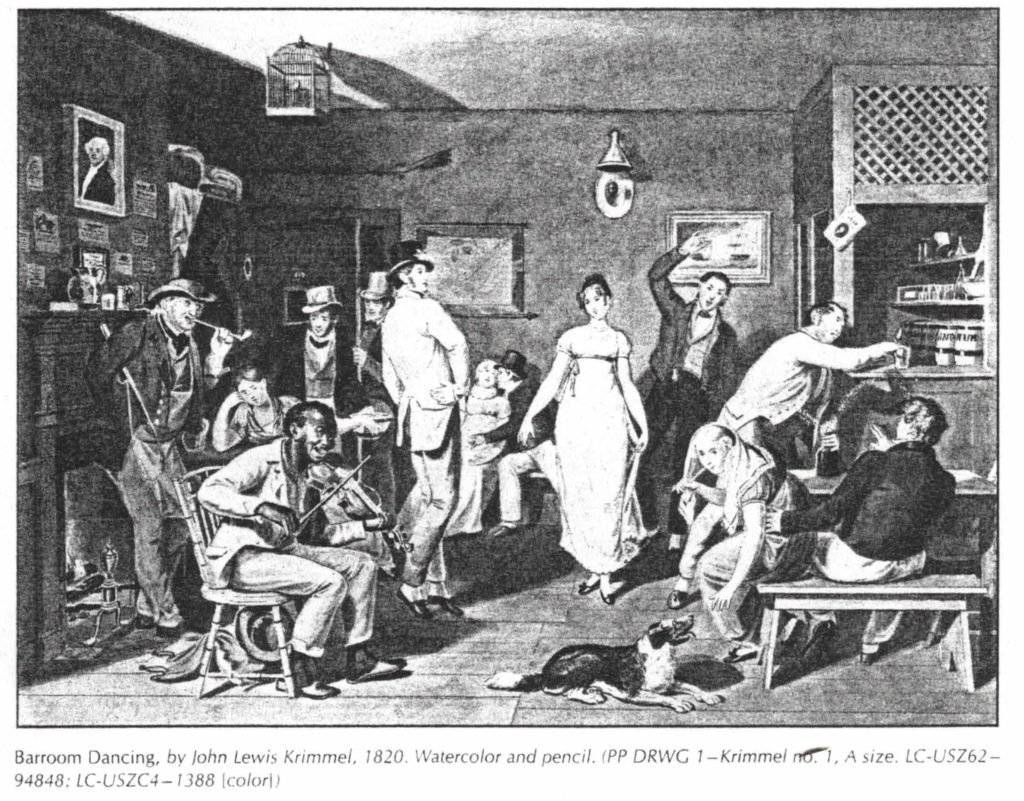
As for the dances, first there were jigs, then the more intricate cotillions. [4] Though the names were taken from the Europeans, the actual dances were some combination of Africa via West Indies, Scottish and Irish, and imitations of dances prevalent in English-derived planter culture. Some dances required a “caller-out,” who we now know from square dancing as the caller. Those rhyming calls are probably descended from the improvised rhymes of the corn-husking contests and fieldwork yells. In this connection we might mention the term breakdown, commonly used to describe the holiday-time plantation dances. They may have been named after the harvesting or “breaking down” of the corn, or after the fact that celebrations usually ended with virtuosic solo displays witnessed by the slapping, clapping, patting group. Regardless, it seems that the Euro-American breakdown, a derivative of the European reel, derives its name from the plantation goings-on.[xvi]
[4] Jig was an Irish term and an Irish dance; as applied to
African Americans in the 18th century it meant some combination of
borrowed, altered, and relatively unrelated Black dances.
The dancers preferred a dance floor to the bare earth, so they could hear their steps—further evidence of the importance of percussion. One dance that persisted right up to the twentieth century was the cakewalk, also known as the walkabout or strut. Enslaved people developed it as an imitation of their masters’ fancy manners. Master awarded a cake to the best dancers.[5] Masters seem to have missed the mockery of their own style, taking it as a flattering imitation. White minstrels corked up their faces to imitate Blacks imitating Whites—and knew not whom they imitated. Later generations of dancers cakewalked to ragtime, in the final run-up to the explosion of jazz.
[5] Berlin, 104. Hence the expression “takes the cake.”
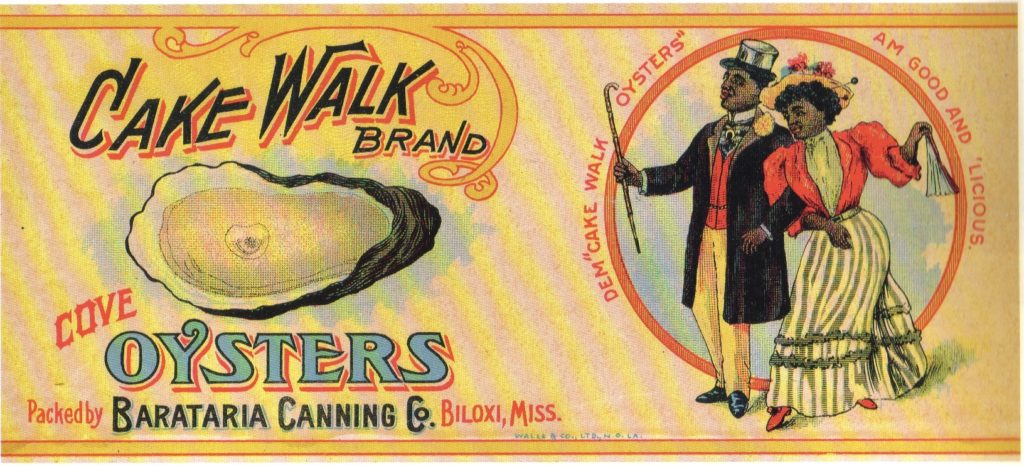
When not mocking Master, the subjugated workers exhibited a different style of dancing than any practiced by Europeans. The fluidity that we observe in most all African-derived movement is partly a result of the center of gravity: the hips. Movement starts here and radiates out in all directions, moving like a wave and freeing up the torso to undulate in a most un-European manner. Watch people dancing to different kinds of music and you’ll see. Watch the Irish and the Balkan and Texan line dancers, watch the Morris and Contra and Country dancers. Then watch the Congolese and Brazilian and funk dancers. If you’ve a mind and body to, dance to all these musics yourself. Report the results to the class. While we’re waiting, let’s look at three versions of the fabled “Hokey Pokey,” an old British folk dance: a “Western” version, a Caribbean/minstrel version, and a hip-hop kids version from 2005.
Another thing you could try is dancing an imitation of an animal. That’s the source of plantation creations like the Pigeon Wing, Buzzard Lope, and Turkey Trot. The latter had a long life after slavery, becoming a popular ragtime dance. Around the same time, the Fox Trot was credited variously to W.C. Handy and others. There were also the Bunny Hug, the Monkey Glide and the Chicken Scratch. Africans during and after plantation slavery often responded to dance calls with animal imitations, quite unlike later and/or Whiter dancers.[xvii]
The subject of African dancing in America can be studied from different angles. Marshall and Jean Stearns observed, somewhat in reverse:
…the Ibibio of Nigeria performing a shimmy to end all shimmies, the Sherbro of Sierra Leone executing an unreasonably fine facsimile of the Snake Hips, and a group of Hausa girls near Kano moving in a fashion closely resembling the Lindy, or Jitterbug…[xviii]
They further note that the director of the Philadelphia Dance Academy
“found [among the Africans] close parallels to American dances such as the Shimmy, Charleston, Pecking, Trucking, Hucklebuck, and Snake Hips, among others.”[xix]
And in America, Zita Allen contends,
The slaves’ low-to-the-ground, bent-knee stance and fluid, articulate pelvic movements, combined with remarkable isolations, syncopations, and improvisations, would leave their stamp on everything from the “Turkey Trot” and “Fox Trot” of the early 1900s to the “Charleston” and “Black Bottom” of the 1920s, the “Lindy Hop” of the 1930s, the “Jitterbug” or “Swing” that followed in the 1940s, and break dancing, hip-hop, and today’s free style.[xx]
According to Marshall and Jean Stearns, there are six important aspects of the African source style, which was
1) danced on naked earth with bare feet, often flat-footed, favoring gliding, dragging or shuffling steps; 2) frequently performed from a crouch, knees flexed and body bent at the waist like a hunter crouched for the kill, 3) imitates animals in realistic detail, 4) places great importance upon improvisation, allowing freedom of individual expression, 5) centrifugal, exploding outward from the hips, and 6) performed to a propulsive rhythm, which gives it a ‘swinging’ quality.[xxi]
More generally, Robert Farris Thompson describes African dance as characterized by
…dominance of a percussive performance style; a propensity of multiple meter, overlapping call and response; inner pulse or keeping a beat indelibly in mind as a rhythmic common denominator in a welter of different meters; suspended accentuation patterning or offbeat phrasing of melodic and choreographic accents; and songs and dances of social allusion…[xxii]
And while there were new influences in the “new world,” the old ones re-asserted themselves every time more captives arrived from Africa. If they came via the Caribbean they brought other variants of expressivity, conditioned by the different regimes: African culture was more pronounced, less modified, in the sugar zones, where humans were more frequently imported directly from Africa, and masters were sometimes more tolerant of African expression.
By studying the evolution of music and dance in the US since the Civil War, and especially since the Spanish-American one, these descriptions tell us that we have all been dancing a derivative of African style all the while, and all the while not knowing it. In a word, not really knowing who we are. Nor, as it often happens, do we know what we are appropriating, without acknowledgment, for our own use.
And then there’s the matter of the music that accompanies the job at hand. Let’s start with corn shucking. The song leader, in this case called the general, takes the workers through their paces:
Gen: Slip shuck corn little while
Cho: Little while, little while.
Gen: Slip shuck corn little while
Cho: Little while I say.[xxiii]
It wasn’t only work songs that provided this framework for participation, though. An early spiritual shows this:
Dere’s no rain to wet you,
O’ yes, I want to go home,
Dere’s no sun to burn you,
O’ yes, I want to go home
Dere’s no whips a-crackin’
O’ yes, I want to go home
Here we hear a link in the chain from West African call and response to its permutations in the blues, jazz, and on down to today. We might compare the corn-songs to the waulking songs, a Scottish tradition. These are sung by a group engaged in pre-shrinking or tightening the weave on a new blanket. At a “milling frolic” I attended in Cape Breton, Nova Scotia, we took turns improvising a wordless vocal chorus: individual improvisation, though no call and response. Such points of similarity between these two cultures will constitute a recurring point of interest in our story—as will the fact that the Scots engaged in an often more physical and extroverted approach to their work and their music than the English. It helps to explain the tendency of convergence between the Celts and the African Americans, a convergence that would rope in the English later on, when they learned to swing.
Another link to the Celts and English and many other nationalities flashes into view when we examine such corn shucking lyrics as
Old marster shot a wild goose…
Ju-ran-zie, hio ho.
It wuz seben years fallin’.
Ju-ran-zie, hio ho.[xxiv]
What does it sound like? A sea chantey, says Roger Abrahams, who goes on to note that most of the corn songs also turned up in similar form as sea chanteys. We’ll come back to that. But to return to the call and response aspect, Abrahams emphasizes a difference from the European style of leader-chorus interaction:
…the leader not only gives out the song, but as the rest come in with the chorus he sings over, under, and through their response.[xxv]
In other words, there is a flexibility, a give and take, an interplay more complex than the simple leader-follower format implies. One hears this in certain churches to this day.
One also hears not-so-hidden meanings employed in the work party songs of old:
Grind de meal, gimme de husk;
Bake de bread, gimme de crus’;
Fry de meat, gimme de skin;
And dat’s de way to bring ‘em in.[xxvi]
All this, theoretically, right in front of the master. Maybe he wasn’t listening, or understanding, or maybe the tone was light enough to be indulged; the kidnapped laborers found a way to voice their discontent in song, and go unpunished. Keep in mind that the captain is not just the best or loudest singer, though he will be that, but also good with words—in other words, a griot.[6] It was, and is, common for Whites to underestimate the doings of African arts in America—in this case, to miss the fact that they were seizing the occasion of group work to comment ironically on their condition and generally to continue their conversation about survival strategies.
[6] The griot in west Africa is an oral historian, court satirist, praise singer,
musician; the tradition dates back into the mists of centuries.
The griot, an important and respected person, was perceived from the outside as a clown—a (lack of) perception that allowed the Trojan horse of community commentary to slip through the gates. Consider this report of a corn frolic:
From the dances a transition was made to a mock military parade, a sort of burlesque of our militia trainings, in which the words of command and the evolutions were extremely ludicrous.”[xxvii]
Back to music: a lively and sometimes ill-mannered debate has thrived over the derivation of African American music. In the early 20th century, Henry Krehbiel made the case for African roots, and Guy B. Johnson countered in 1930 with the claim that most African American musical elements were traceable to Euro-American practices. This debate was heavy with racism and simplification, but in the end it helped to point to the syncretism that results when two cultures with common practices meet. The Scottish practice of “lining out,” in which a preacher or song-leader sings a line and the congregation repeats it, was similar enough to African call and response to have prompted enchained worshippers to adopt the hymns of Isaac Watts and make them their own for centuries.
It’s a little hard to tell at this distance precisely what the folk music of the 19th century was like, but as to what it derived from, we can be sure it was a gradually shifting mix of African heritage and influences from the New World. Jeannette Robinson Murphy wrote in 1899 that “the greater part of their music, their methods, their scale, their type of thought, their dancing, their patting of feet, their clapping of hands, their grimaces and pantomime”[xxviii] came directly from Africa. She cites African American authorities of her day—clergy and laity—as backing her contention. More recent research among the Gullah or Geechee people of the Georgia and South Carolina Sea Islands confirms the African roots of many African American practices, including musical ones.
And even then, in 1899, Murphy described with some amusement the White folks’ attempts to render the Black tunes:
What is there to show him that he must make his voice exceedingly nasal and undulating; that around every prominent note he must place a variety of small notes, called ‘trimmings,’ and he must sing tones not found in our scale…[xxix]
She proudly recounts a compliment received as she sings with a Black family she visits: “You does shore significant ‘em good; and for a white lady you is got a good deal of de Holy Spirit in you, honey.” All along, it seems, African Americans have had something Whites wanted, beyond their labor.
The music of the African laborers exhibited a vigor born of its use: survival. It was a form of community-building. It allowed individual expression in a society where Blacks were enslaved en masse; it expressed suffering and longing in a way that made it easy for other suffering and longing people to understand—other people who were, if not enslaved, at least painfully exploited. For this reason it traveled well, and far.
Through more than just music, the imprisoned workforce had a pervasive, daily influence on plantation aristocrats, and especially on their children, in a society in which
…the infant son of the planter was commonly suckled by a black mammy, in which gray old black men were his most loved storytellers…in which his usual, often practically his only, companions until he was past the age of puberty were black boys (and girls) of the plantation…nearly the whole body of whites, young and old, had constantly before their eyes the example, had constantly before their ears the accent, of the Negro…[xxx]
[i]Higginson, 41.
[ii]Stuckey, 11.
[iii]Stearns 1956, 12-13
[iv]Stuckey 373, n.203
[v] Epstein 2003 (1977), 7-17, quoted in Maultsby ,“The African Cultural and Musical Past,” in Burnim and Maultsby. See also White, 1994.
[vi]Stuckey, ibid., 93.
[vii]loc. cit.
[viii]Stearns 1956, 13.
[ix]Abrahams 180.
[x]Burwell, 131-32.
[xi]Southern, 1983, 178.
[xii]Fry, 85.
[xiii]Handy, W.C., 5.
[xiv]Melville and Frances Herskovitz, 520.
[xv] Rhiannon Giddens Black Roots podcast, https://www.bbc.co.uk/sounds/play/m0017khq , Ep 1, 5/24/22 minute 13:12
[xvi]Abrahams, 102.
[xvii]Stuckey, 370, n.159.
[xviii]Marshall and Jean Stearns, 13.
[xix]loc. cit.
[xx] Allen, Zita, “From Slave Ships to Center Stage,” https://www.thirteen.org/freetodance/behind/behind_slaveships.html
[xxi]Marshall and Jean Stearns, Jazz Dance, cited in Allen.
[xxii]Robert Farris Thompson, Flash of the Spirit, cited in Allen.
[xxiii]Barrow, Jr., David C., A Georgia Corn-Shucking, Century Magazine, XXIV, New York 1882, in Jackson, Bruce, 168.
[xxiv]John Cabell Chenault, Old Cane Springs: A Story of the War Between the States in Madison County, Kentucky, Louisville: The Standard Printing Co., 1937), cited in Abrahams, 115.
[xxv]Abrahams, 119.
[xxvi]E.C. Perrow, Journal of American Folklore 28 (1913), 139, cited in Abrahams, 124.
[xxvii]William Cullen Bryant, Letters of a Traveler, New York:Putnam, 1850, cited in Abrahams, 194.
[xxviii]Jeannette Robinson Murphy, The Survival of African Music in America, Popular Science Monthly, 55, New York, 1899, in Jackson, Bruce, 331.
[xxix]loc. cit.
[xxx]W.J. Cash, The Mind of the South, quoted in Abrahams, 1992, 24-25.

